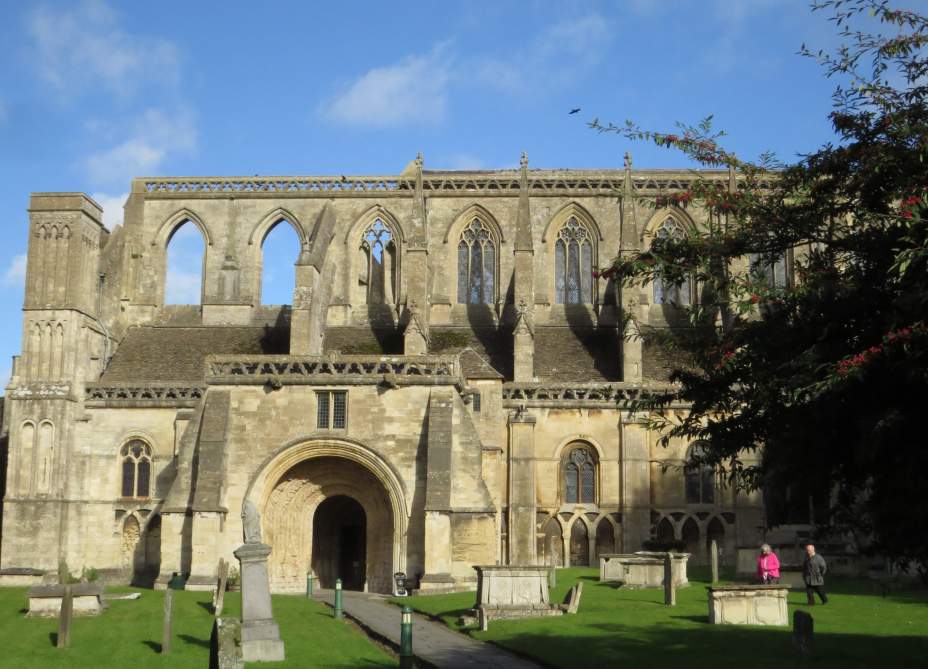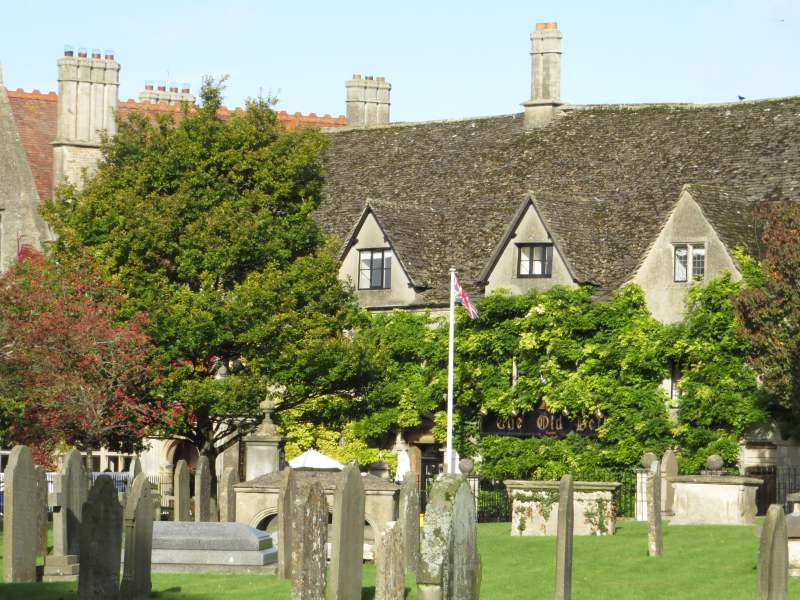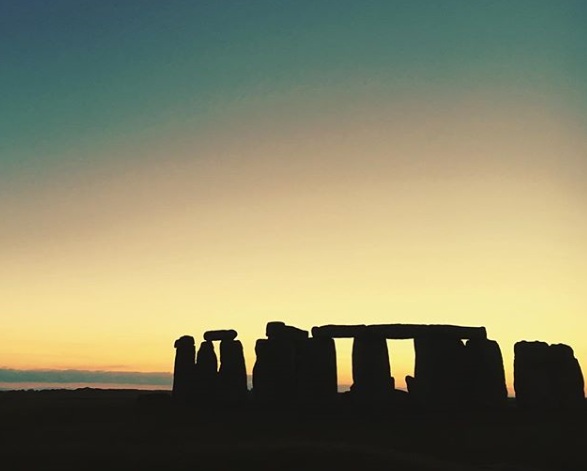Innate in our psyche and strengthened by experience is a strong association with stone: the houses we live in, castles, stately homes and churches we have visited and trips we have made abroad to see sights such as the Alhambra, the great Wall of China, the Coliseum, and the church of La Sagrada Familia in Barcelona, to name a few I have been fortunate to experience.


The seven wonders of the ancient world (ref) around the Mediterranean were all architectural structures, even the hanging Gardens of Babylon. These gardens were reputed to be a wonderful combination of trees, shrubs and flowers with statues and columns, the whole area engineered in an ascending series of tiered gardens and with a remarkable irrigation system. Their location has never been ascertained; one theory is that they were built not in Babylon by Nebuchadnezzar II but in Nineveh by the Assyrian King Sennaccherib.
Of these only the Pyramids at Giza remain. Four, the Colossus of Rhodes, the lighthouse at Alexandria, the statue of Zeus and the mausoleum at Halicarnassus were wholly or partially destroyed by earthquakes; one the temple of Artemis was destroyed purposely by fire after being rebuilt three times.
So what are the thoughts and dreams these stone structures evoke: fondness for times past and particular periods of our lives, admiration of their beauty and the art of their construction, shared homage to an eminent person, deity or empire or for the qualities and the longevity of the stone.


My first association with stone was from living in the Cotswolds with its wonderful mellow soft stone used for houses, churches and walls. Cotswold stone has a warmth on which J.B. Priestly remarked “when the sun is obscured and the light is cold, these walls are still faintly warm and luminous, as if they knew the trick of keeping the lost sunlight of centuries glimmering about them.” The region is rich in small villages such as Bibury, Lacock, Castle Combe and Bourton-on-the Water that are big tourist attractions but many others have a distinct charm. Returning to this area evokes warm memories of a happy childhood and gentle pastimes, the rougher trials of childhood swallowed up in a mist of forgetfulness that seems to occur naturally in most of us.
By contrast the school I attended in Salisbury was a tall redbrick building, built in the late Victorian era and in recent photos it looks much the same as I remembered it over sixty years ago. Not a building of great beauty.

By contrast looking from the upper floors of the school one could see the imposing spire of Salisbury cathedral, which never lost it’s attraction, despite being an everyday sight. The sports grounds of our great rivals, the Cathedral School were located in the lee of the cathedral and especially in the summer this was a wonderful venue for cricket matches, which we appreciated despite our generally philistine outlook. Over the years we visited the cathedral a number of times and learnt to appreciate the qualities that have led it to be described as possibly the leading example of Early English architecture with a unity of vision. The latter stemmed from the fact it was built in a period of just 38 years between 1220 and 1258, truly astonishing. The stone used was a combination of Chilmark stone ( from the latter part of the Jurassic period, around 145 million years ago) and Purbeck marble, a crystalline limestone, quarried in Corfe Castle, Dorset. In recent times the Chilmark stone needed for repairs has been obtained from the Chicksgrove Quarry nearby. The dark, slender columns of Purbeck marble create here a quite fabulous sense of space and height. It has been used primarily in the column shafts of the nave and aisles, and in the vault ribs. The same use of contrasting colours for columns has been used with great effect for the interior of the Sagrada Familia (see photo above)
The cathedral also possesses one of the four extant copies of Magna Carta, the charter signed between King John, the fourth son of Henry II and Eleanor of Aquitaine and the barons at Runnymede on June 15, 1215. This document did not lay down the principles of democratic government but was a crucial predecessor. It established the rights of the classes possessing land and established that even the King was not above the “supreme law” ( Winston Churchill – the Island Race), The charter was brought to Salisbury by William Longespee, half-brother of King John, who is buried in the Cathedral.
During my time in Salisbury we were taken to several important stately homes, such as Longleat and Wilton that were even then open to the public. Longleat, built of Bath stone (1568-1580), was an enormous venture ; the house has 128 rooms and cost £31 million in today’s terms; Wilton House, the home of the Earls of Pembroke for over 400 years was built as a Tudor House in 1551 and then redesigned by De Caus and Inigo Jones between 1632-1647. The gardens and park covering 21 acres provide a magnificent setting with the small Palladio bridge across the river and the large stone Whispering seat.
As an adult both these houses are interesting and impressive. However, as a child of under ten, the open areas around the city and in particular the ruins of Old Sarum were more appealing. Perhaps if the safari park at Longleat opened in 1966 had been there or I had attended the Wessex Country Fair at Wilton, my memories would have been different.

Old Sarum lies just a couple of miles north of the present city of Salisbury and as it’s name implies was the site of the original city. It started off as an iron age hill fort (400 BCE) with impressive ramparts and then in Norman times a castle was built by William the Conqueror in 1070. Five years later construction on a cathedral was begun nearby, beneath the raised ground of the castle (motte). Disagreements between the churchmen of the cathedral and the soldiers of the castle led to the decision to build a new cathedral to the south. The cathedral was dismantled over a period of years and today only the outline of the foundations can be seen. The castle lasted until about 1514 but the area was sold off by Henry VIII, who in his bid to raise revenues sold off and destroyed many castles, churches, cathedrals and monasteries. The peak period for the dissolution of the monasteries was 1536-1541 but kingly patronage and largesse was more easily dispensed if revenues were gained by confiscation). The clear outline of the motte-and bailey castle construction can still be seen, which was exciting for a young boy bought up on “1066 and all that”.
Whilst the beauty and history of these stone constructions is clear, sadly their longevity varies widely. Both nature and man have played a part. Often stone is reused as in the construction of Salisbury cathedral from the cathedral at Old Sarum. Earthquakes and fires have destroyed many buildings, the fire at Notre Dame in being a notable example. Greed caused the destruction of many monasteries and warfare settled the fate of many castles such as the old Coventry cathedral, Corfe castle, Tintagel and Dunstanburgh.
Yet amazingly many have survived.

Before the iron age fort was formed at Old Sarum, the hill top site was a Neolithic settlement. Another famous neolithic site not far from Old Sarum is Stonehenge. Journeying from north Wiltshire south to Salisbury, we could cross the barren stretches of Salisbury plain, used then and now as an army training area through Potterne, Market Lavington, Tilshead, and Shrewton. Crossing the A303 near Amesbury, the stones of Stonehenge came into view standing alone in the wide open spaces. In those days the site was open with no fencing and very few visitors. Since 1986 it has been a UNESCO World heritage site and no wonder.
So it deserves a separate article when I can write about my fascination with the Neolithic stone structures at Stonehenge, Callanish and other Scottish and Irish neolithic sites.
Written 27-30th June
Very informative. The pictures are an encouragement to visit the historical riches not a million miles away.
LikeLike